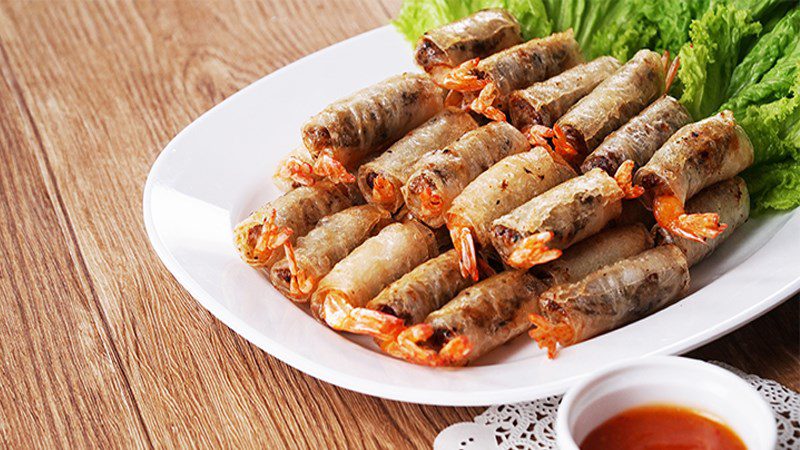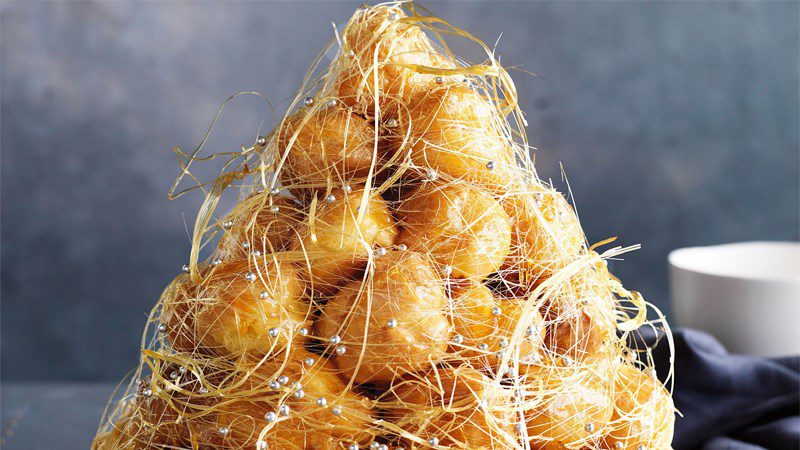Sweet-toothed enthusiasts are surely familiar with the name cream puff. However, do you know how many types of cream puffs there are in the world? Let’s join the Cooking Tips section of Tastetutorial.com to learn more about how to distinguish this type of cake!
1. Cream puff/Choux à la crème – Traditional round cream puff
The sweet cake Cream puff or Choux à la crème is the French name for this cake, or the cake is also known by the more familiar name cream puff. The cake was created by the head chef of the court Caterina de ‘Medici around the 14th century. However, until the 19th century, Antoine Carême perfected the recipe for sweet choux pastry (cream puff) that is still used today.
Over the years, cream puffs have had many variations in recipes such as Profiteroles, Chouquettes, Swan Pâte à Choux,… However, the first standard of the cream puff is that the outer shell must be crispy and the inside must be hollow to allow for filling.

The characteristic of Profiteroles is a round cake, about 4 – 6cm in size, filled with fresh cream or custard inside. Especially, the Profiteroles are usually served cold and covered (or dipped) with a thin layer of chocolate on top.

As for Chouquettes, they are round in shape and covered with sugar on the outside. This cake is often confused with Profiteroles since both are round in shape. However, Chouquettes are served hot, have a crispy shell, and the inside is hollow without cream filling.

Swan Pâte à Choux is a more elaborate variation of the cream puff where the shape of the cake resembles a swan, and it is baked with a crispy shell, filled with cream or custard inside.

2. Eclair/Éclair – Long Cream Puff
Éclair Cake was created in the 19th century in France and is called pain à la duchesse (duchess bread). Éclairs were first made by a French chef named Antonin Carême.
The characteristic of this type of cake is that it is shaped from choux pastry (the pastry used to make cream puffs). The outer layer will be crispy and puffed after baking, while the inside of the cake is hollow and is filled with a filling (egg cream or whipped cream, etc.) after the cake cools. When served, the cake is served cold and drizzled with chocolate or fruit glaze on the surface.

However, the special thing about the Éclair is that instead of being made in a round shape, the cake is placed in a mold that is elongated, about 7 – 10cm long.

3. Craquelin – Crispy cream puff
Regarding the origin of the Craquelin cake, the history or the first person to make this cake is currently unclear. However, if you are also a sweet tooth for Japanese pastries, you will notice the similarity of Craquelin with the flaky crust of the Japanese Melon Pan.
Craquelin is made from flour, sugar, and butter, and once the mixture is kneaded into blocks, it is rolled out thinly. Then it is frozen and cut into even round pieces. Finally, these pieces are placed on top of the pâte à choux (cream puff dough) after shaping and then baked.

Particularly, because it is made from butter and sugar, the cake retains its crispness longer after cooling and filling with cream compared to traditional cream puffs.

4. Paris Brest
This type of cake was created in 1891 to commemorate the bicycle race from Paris to Brest, which is why the Paris Brest cake is shaped like a circular wheel as a tribute to this race.
Paris Brest consists of a crust that has a structure similar to traditional cream puff pastry. However, instead of the filling being injected inside the pastry, the filling of the Paris Brest cake is sandwiched between two circular crusts to resemble a wheel more closely.
The filling inside is usually custard, cream cheese, whipped cream, etc., with a variety of flavors. The outside of the cake is covered with powdered sugar, almonds, and hazelnuts to make the cake both delicious and visually appealing.

5. Saint Honoré
Saint Honoré cake, also known as St. Honoratus cake, is named after the patron saint of bakers and pastry chefs. This cake was created in 1847 at the Chiboust bakery on Rue Saint-Honoré in Paris.
French pastries and desserts are always famous for their intricacy and meticulousness in each cake. Therefore, it is not an exaggeration to say that just by looking at the Saint Honoré cake, you can see the delicacy of this dessert with many layers beautifully stacked on top of each other.
At the bottom of the cake, they use puff pastry to create lightness for the dessert. On top of that puff pastry will be small cream puffs filled with egg cream or whipped cream with various flavors inside. Finally, the cake will be connected together with whipped cream in between.

6. Croquembouche
Among all versions of cream puffs, Croquembouche is the most magnificent and elaborate in preparation and presentation.
The Croquembouche cake, also known as Croque en bouche, was created by a French chef named Antonin Carême in 1815.
This cake is made from small cream puffs filled with cream. They are then dipped in a little melted caramel to hold the cake together while stacking them like a tower. Finally, the remaining caramel will be drizzled from top to bottom around the tower.
Perhaps because of its grandeur and the complexity of its decoration, this cake is often used in weddings, first communion ceremonies, and baptism ceremonies in France and Italy.

Hopefully, this article will help you distinguish different types of cream puffs around the world, as well as learn more about their names and how to make these cream puffs. Don’t forget to visit the cooking tips section for more interesting knowledge!
*References and information gathered from Wikipedia





